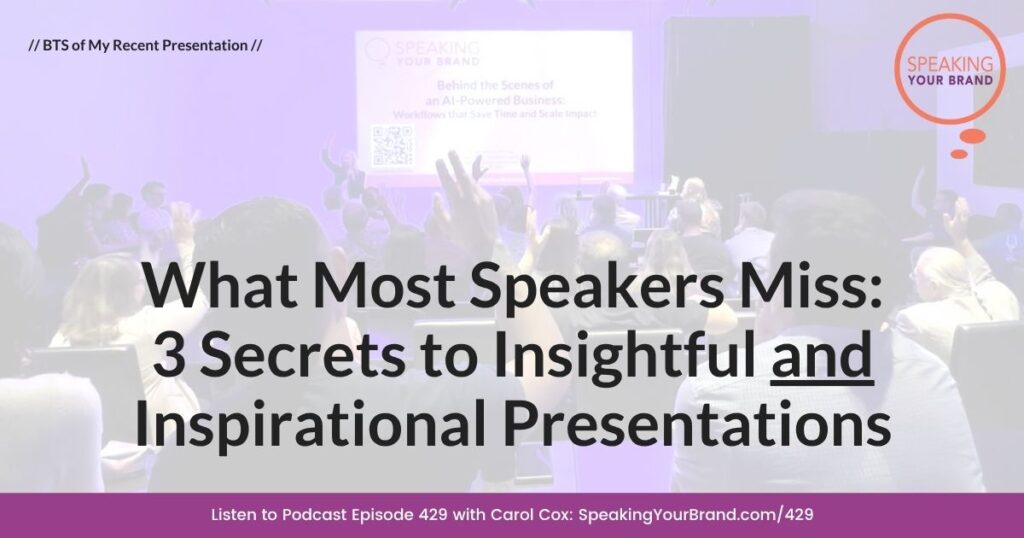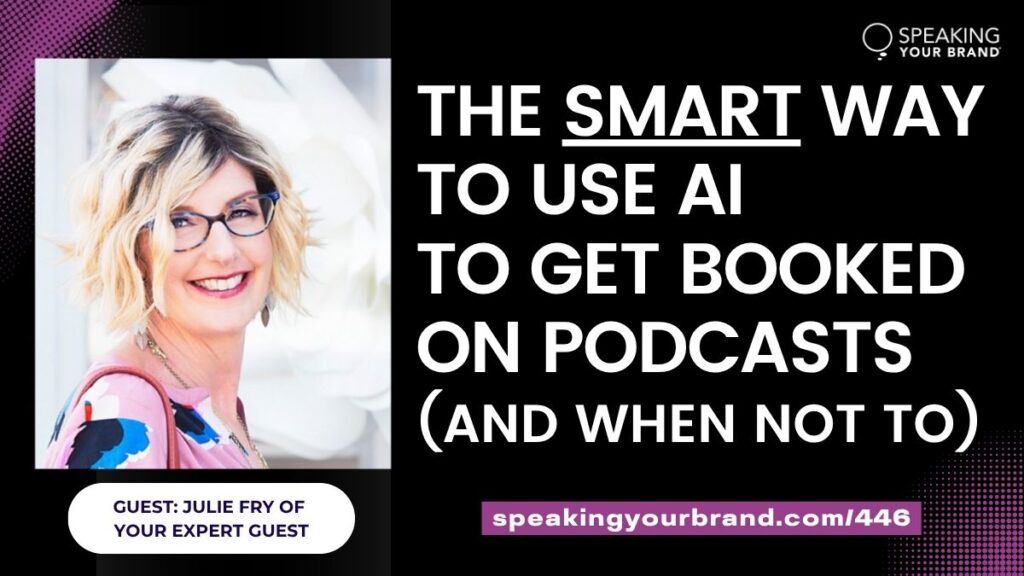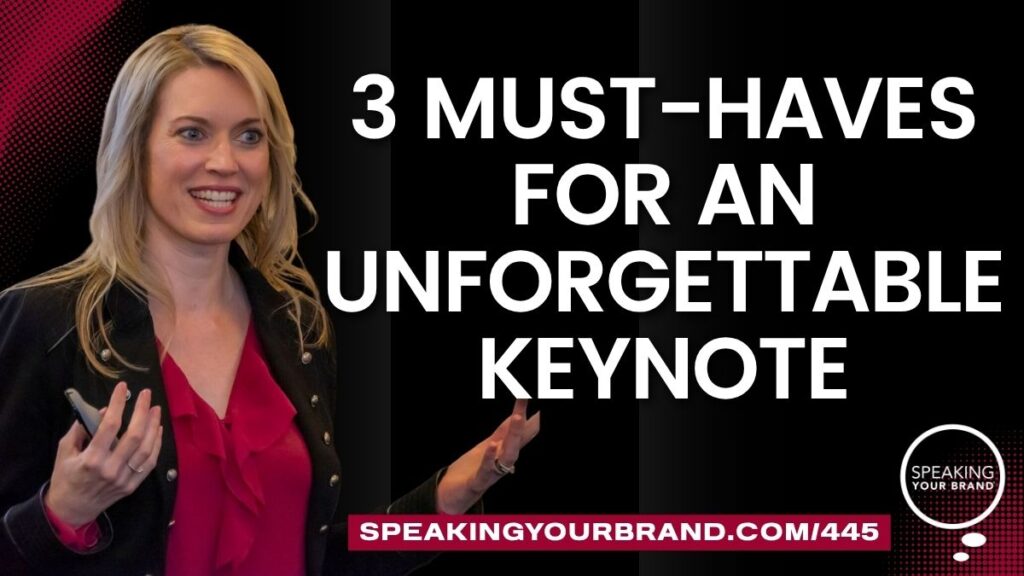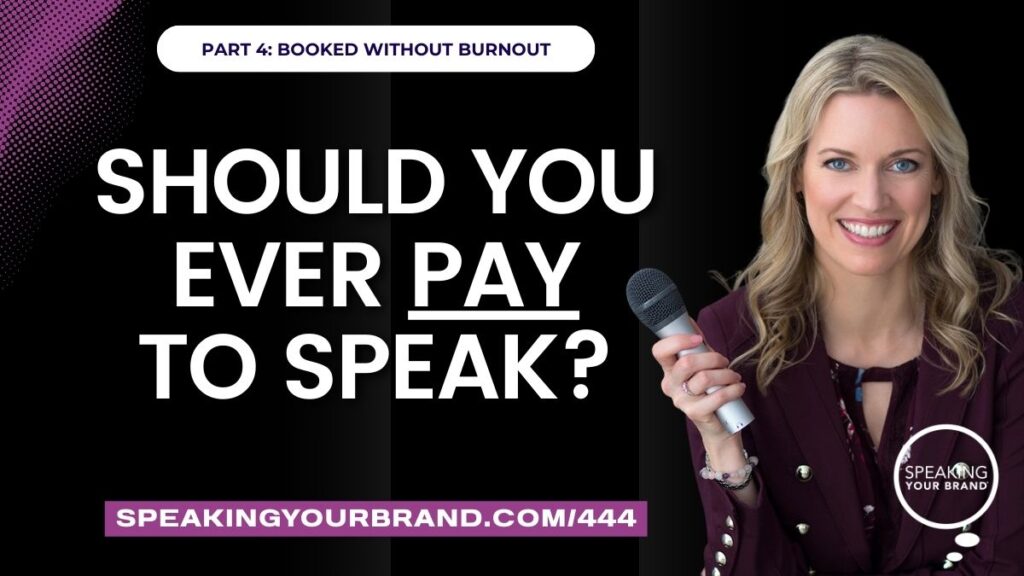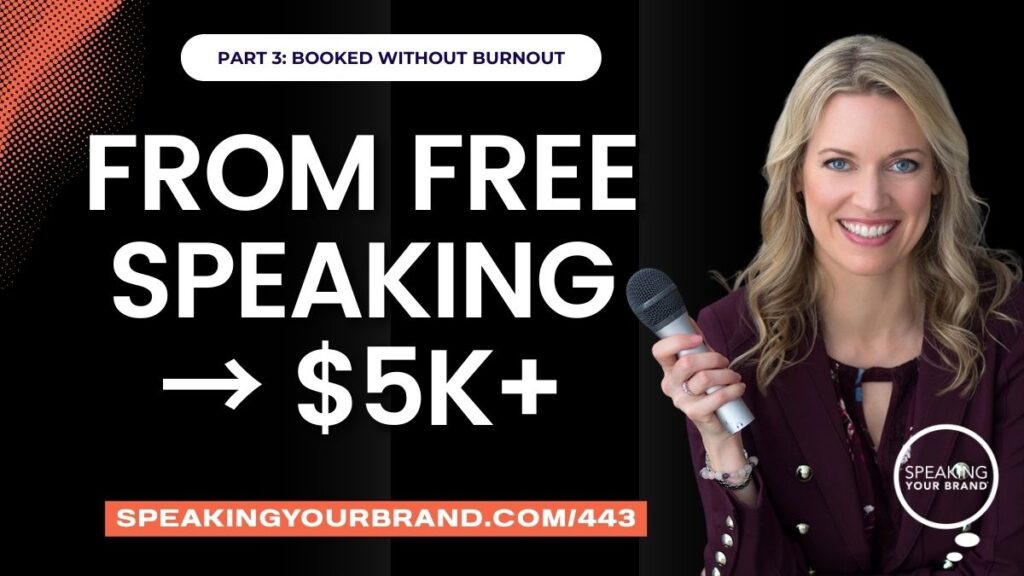429-SYB-3-Secrets.mp3: this mp3 audio file was automatically transcribed by Sonix with the best speech-to-text algorithms. This transcript may contain errors.
Carol Cox:
How can you make your presentations both insightful and inspirational? I’m sharing three secrets you can use for every talk you give, no matter the topic, on this episode of the Speaking Your Brand podcast.
Carol Cox:
More and more women are making an impact by starting businesses, running for office, and speaking up for what matters. With my background as a TV political analyst, entrepreneur, and speaker, I interview and coach purpose driven women to shape their brands, grow their companies, and become recognized as influencers in their field. This is speaking your brand, your place to learn how to persuasively communicate your message to your audience.
Carol Cox:
Welcome to the Speaking Your Brand podcast. I’m your host, Carol Cox. Today, I’m going to take you behind the scenes of an hour long presentation that I recently gave at an AI meetup. The presentation topic was behind the scenes of an AI powered business, workflows that save time and scale impact. And in that hour long presentation, I showed specific examples, real world use cases of how I’m using AI automations and agents in my podcast Production Lead Nurturing. I’ve even created an assistant that I can use in slack. It’s really, really cool to do things like send emails and add meetings to calendars and so on. This presentation had about 50 to 60 people in the audience. It was a full house at the venue where it was at, and the people. There were all levels of AI knowledge and expertise, everyone from people who are very techie in the machine learning space to people who just have a curiosity about AI.
Carol Cox:
I had friends and some speaking your brand clients in the audience, so it was so much fun. How this speaking engagement came about is because I had attended the prior months meetup, introduced myself to the event organizer and casually said to her, if you’re ever looking for any presenters, I’m happy to do so because I’ve been integrating AI into what I’m doing with my business and podcast. And she said, oh, as a matter of fact, we’re looking for a speaker for next month because our speaker can’t make it because he has to go out of town. Would you be interested? And I said yes on the spot, because number one, deadlines really do spur me to action to kind of finish some things that I was working on and also to put together the presentation. And I am very passionate about this topic, and you’ll hear me talk a little bit more about this as we get into the episode. What I want to share with you today is how you can make your presentations both insightful and inspirational. Now you may think with a tech focused presentation like this. After all, I’m showing video demos and screenshots of different automation workflows and different ways that I’m using AI in my business and podcast.
Carol Cox:
So yes, it’s very practical and it’s and is very tangible, but I also wanted it to be inspirational. I wanted to make sure that my thought leadership came through. Here’s what some people who were in the audience commented on my LinkedIn post about this, and I’ll include a link to that post in the show notes. They said things like it was a memorable, insightful, and engaging presentation. It was engaging, informative and incredible presentation, great content, and a fully engaged audience. Thanks for sharing your wisdom and knowledge with us. Equal parts informative and inspiring, and this is the kind of feedback that I aim for. And you heard the word engaging several times, and I’m going to talk about that in secret number three today. As far as how to make your presentations both insightful and inspirational. So engaging is a key word. Insightful is a key word and wisdom and knowledge. So you notice it wasn’t about teaching and training. It’s about wisdom. That’s where the insights come from. But it’s also about the inspiration, walking away with ideas, thinking about how this can apply to them. Now, I know if you’re listening to this podcast, you want to deliver a great presentation, you want to make sure your audience gets value from it, and you also want to get leads for your business and probably more speaking invitations as well. Well, as soon as I was done with my presentation that evening, I got one speaking invitation.
Carol Cox:
As soon as someone came up to me right off the bat. So that’s what I want for you as well. But we have a tendency to want to teach and train, to show all the things, to walk people through step by step. When we’re giving a presentation, say, at a conference session or at a business luncheon, learn. But that’s not really the appropriate time and place for a teaching and training. Those are better for YouTube tutorials, video trainings that you have in your online program or paid workshop that you’re doing instead. If you’re doing a presentation, especially for lead generation and that you want to be seen as the go to person in your industry, the go to person in your space. You really want to make sure that you’re incorporating thought leadership and that inspiration into what you’re doing. So I’m going to share with you here three secrets to do to make sure every presentation you deliver, no matter the topic, no matter the audience, is both insightful and inspirational. And I’ll share with you what a friend who was in the audience told me afterwards, which I was very happy to hear, but I hadn’t ever really thought about it in that way. If you want to see my presentation slides, you can get access to those by going to speaking your comments.
Carol Cox:
Again, that’s. There’s a link in the show notes. You can just click on that link along with my presentation slides. You’ll also get access to the notion project that I’m building out that shows how to build some of these AI workflow automations for yourself. I’m also in the process of creating a live online workshop or online program to help you build these AI automations and agents for yourself. So if you sign up at that link speaking your brand. You’ll also get on our email list, and so you’ll know when that workshop or program launches. Now let’s get on with the show. Secret number one have a clear flow and structure to your presentation. Every great talk needs structure. This does not mean that you write out word for word what you’re going to say. Not really possible, especially in an hour long presentation. So it’s not about being rigid, but it’s about knowing where you’re going. And in this I presentation that I delivered, I used our signature talk canvas framework, which I use for every presentation that I give. No matter if it’s a more technically oriented presentation or a keynote, and we use it for every single client that we work with, because it helps you to organize your ideas into a compelling narrative with a beginning, a middle, and an end. So often when I see speakers, especially at, again, more technically oriented presentations or conference sessions, is that they kind of have a beginning and they talk a bit about themselves, and then they have, I guess, what you would call a middle, because that’s like their main content, but then it kind of just fizzles out.
Carol Cox:
There’s no really clear ending. The ending doesn’t tie back to the beginning. So that’s what our framework does, is it gives you that clear structure. I went through the signature Talk Canvas framework in detail and podcast episode number 288. So you can go back and find that one. As I was creating this I presentation in act one, I talked about what the audience wants. So these new opportunities in AI, they want to learn how it can apply to them, how they can apply it within their own business and in their own career. I talked about some of the obstacles that we face in thinking about how to apply AI. It seems overwhelming. There’s new tools every single week. How do we make sense of it all? And then I built in my background and credibility. I was a software developer in the first part of my career. I founded and ran two technology companies and worked with everyone from fortune 500 companies to government agencies to startups. So I kind of built in my credibility with that and an audience engagement, of course, along the way. Then in act two, that was the main part of my content.
Carol Cox:
And as I mentioned, I had these different automation workflows that I had created. So I wanted to show real world, practical ways to do this. So not just, oh, here’s a tool and here’s a tool, but here’s how I’m actually thinking about it for my podcast, for lead nurturing, for operations and so on. So then in the middle of my talk, I broke it into three content buckets. So I talked about using AI in operations, in marketing and in revenue. So operations, marketing and revenue and that I had 2 or 3 examples under each of those buckets. So instead of just having like a laundry list like, oh, here’s 8 or 10 different workflows that I’m using, but no real rhyme or reason as to why I’m showing one and then the next. I put them into these three buckets. So as you think about for your talks, how can you organize that act? Two that kind of middle main part of your talk into three buckets or three segments. So the things that are related to each other go together. And doing this creates natural transitions. That also gives your audience a mental map to follow as you’re going along. And it helps you stay focused and helps the audience stay focused as you’re going through your talk. So that was secret number one is have a clear structure and flow and use our signature Talk Canvas framework to make it easy for you to do that.
Carol Cox:
Secret number two is incorporate thought leadership. No matter what your topic, no matter the audience, no matter if you really are doing teaching and training, and if you have to show how to do certain things, you should always, always include why this matters, why this matters to you, and why this matters to your audience. You need to give them the bigger picture. In this case, with my presentation, in addition to showing these very practical automation workflows, I talked about how AI and these new AI agents are transforming, how we think about the work that we do. They’re changing how we need to work. So now we’re going to be doing a lot more guidance and management and leadership and less of the doing. And all of this requires not only a different mindset, but really us developing those management and leadership qualities. So that was a thought leadership I integrated because your audience doesn’t just want the how. They also want the why now? So why does this matter to me now? What difference is it going to make and how can I be a part of it? So ask yourself what trend shift or insight can you shine a light on? What’s the transformation you want your audience to believe is possible for them? This is what elevates your presentation from a helpful talk to a thought provoking one.
Carol Cox:
So that was secret. Number two is always integrate thought leadership. That bigger picture that bigger. Why that insight or that shift that you see. Secret number three is all about your delivery. Yes, your content is important. You want to have nice looking slides. You want to make sure that you’re taking your audience on that journey with a clear beginning, middle and end. But your delivery is ultimately what’s going to make your presentation engaging and memorable. After my presentation was over, a friend who I invited to attend came up to me and said, wow, Carol, you are the same person up there as you are when I’m just talking to you at our dinner table. And that means so much to me because he said it was so conversational. It was like you were having a conversation with the 60 of us who were in the audience. And I must say that that has not always been the case with the presentations that I’ve delivered, but I feel like all of the work I’ve been doing, especially for the past five years, over 400 podcast episodes, the many, many, many speaking engagements I’ve done, both in person and virtually, I’ve been able to let go of like that presenter mode, which I often found myself in and instead just show up, just show up as me, as I literally as I’m having a conversation with someone over the table.
Carol Cox:
And so it helps that I’m genuinely excited about the topic of AI and what it’s going to mean for us, but it’s also the result of a lot of practice and about choosing connection over perfection. This is why we always say, do not memorize your talks. Do not try to memorize your talks because you’re going to lose that natural, authentic way that we talk to people. When you’re trying to remember that perfect turn of phrase that you wrote down, which is probably not the turn of phrase you would ever use in a normal conversation with someone when you’re up there on stage, or even on zoom. Think about having a conversation with your audience. Let them feel your passion. Share stories with them. Share funny memes, funny video clips. Add humor. Let them see your humanness. After all, that’s what our advantage is over the AI. And that’s especially the case if you’re talking about something that’s technical or maybe a little bit more abstract. And again, you can see how I integrated video clips and humor and funny memes in my presentation slides. You can get them as speaking your brand. Now, you don’t need to be a professional speaker or a content machine to create a powerful presentation. You just need to incorporate these three secrets. A clear structure and flow. A big picture lens of your thought leadership, and a delivery style that is rooted in conversation and authenticity.
Carol Cox:
Whether you’re speaking to clients, to conference audiences, or to colleagues, these three elements will help you to deliver talks that inspire action and get results for you, including leads for your business, more opportunities, and more speaking invitations. Now, if you would like to work with us to create your signature talk using our framework, we do this one on one in a VIP day that clients call magical. We take all of those ideas, all of those content pieces, all of your stories and client examples that are running around in your head. And we put them into the structure and flow using our unique and proven framework. You can do a standalone VIP day, or you can do a VIP day as part of our Thought Leader Academy. You can get all of those details about the standalone VIP day and our Thought Leader Academy, including pricing on our website as speaking your brand. Again, that’s speaking your brand. And then please schedule a call with us. We always love to talk with podcast listeners. We’d like to hear what your goals are, what you feel like you need the most help with, and then we’ll talk about which of our programs is the best fit for you, to help you achieve your goals and become the kind of speaker and thought leader you want to be. Until next time, thanks for listening.
Sonix has many features that you’d love including automated translation, share transcripts, automated subtitles, advanced search, and easily transcribe your Zoom meetings. Try Sonix for free today.

